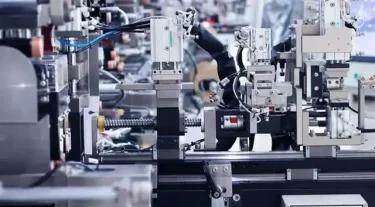
# Tape Manufacturing Process and Techniques
## Introduction to Tape Manufacturing
Tape manufacturing is a complex process that involves various techniques to produce adhesive products for numerous applications. From packaging tapes to medical adhesives, the production methods vary depending on the intended use and material composition.
## Raw Materials in Tape Production
The foundation of any tape product lies in its raw materials. Manufacturers typically use:
– Backing materials (plastic films, paper, cloth, or foil)
– Adhesive compounds (rubber-based, acrylic, or silicone)
– Release liners (for pressure-sensitive tapes)
– Additives (to enhance performance characteristics)
## The Tape Manufacturing Process
### 1. Backing Material Preparation
The process begins with preparing the backing material. For plastic tapes, this involves:
– Extruding polymer resins into thin films
– Calendering to achieve precise thickness
– Corona treatment to improve adhesive bonding
### 2. Adhesive Application
Several techniques are used to apply adhesives:
– Solution coating: Dissolving adhesive in solvent before application
– Hot melt coating: Applying molten adhesive directly
– Water-based coating: Using emulsion adhesives
– Transfer coating: Applying adhesive to release liner first
### 3. Drying and Curing
After application, the adhesive goes through:
– Drying ovens to remove solvents or water
– UV curing for certain adhesive types
– Controlled cooling processes
### 4. Slitting and Rewinding
The final steps include:
– Precision slitting to desired widths
– Rewinding onto cores for packaging
– Quality control inspections
## Advanced Manufacturing Techniques
Modern tape production incorporates several advanced methods:
### Multi-layer Coating
Some tapes require multiple adhesive layers with different properties, achieved through:
– Sequential coating processes
– Simultaneous multi-layer application
– Gradient adhesive technologies
### Pattern Coating
Specialized applications use:
– Screen printing techniques
– Gravure pattern coating
– Spray application for controlled coverage
## Quality Control in Tape Manufacturing
Stringent quality measures ensure consistent performance:
– Adhesion testing (peel, tack, and shear)
– Thickness measurements
– Tensile strength evaluations
– Environmental resistance testing
## Environmental Considerations
Sustainable manufacturing practices include:
– Solvent recovery systems
– Water-based adhesive formulations
– Recyclable backing materials
– Energy-efficient drying processes
## Future Trends in Tape Production
Emerging technologies are shaping the industry:
– Nanotechnology-enhanced adhesives
– Biodegradable tape materials
– Smart tapes with embedded sensors
– Automated production monitoring systems
The tape manufacturing process continues to evolve with new materials and techniques, meeting the growing demands of diverse industries while addressing environmental concerns.
Keyword: tape manufacturing
Leave a Reply